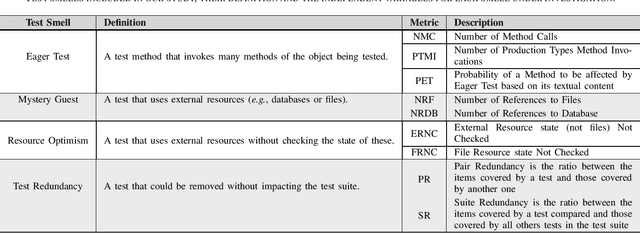Fabiano Pecorelli
AI Techniques in the Microservices Life-Cycle: A Survey
May 25, 2023Abstract:Microservices is a popular architectural style for the development of distributed software, with an emphasis on modularity, scalability, and flexibility. Indeed, in microservice systems, functionalities are provided by loosely coupled, small services, each focusing on a specific business capability. Building a system according to the microservices architectural style brings a number of challenges, mainly related to how the different microservices are deployed and coordinated and how they interact. In this paper, we provide a survey about how techniques in the area of Artificial Intelligence have been used to tackle these challenges.
Machine Learning-Based Test Smell Detection
Aug 16, 2022
Abstract:Context: Test smells are symptoms of sub-optimal design choices adopted when developing test cases. Previous studies have proved their harmfulness for test code maintainability and effectiveness. Therefore, researchers have been proposing automated, heuristic-based techniques to detect them. However, the performance of such detectors is still limited and dependent on thresholds to be tuned. Objective: We propose the design and experimentation of a novel test smell detection approach based on machine learning to detect four test smells. Method: We plan to develop the largest dataset of manually-validated test smells. This dataset will be leveraged to train six machine learners and assess their capabilities in within- and cross-project scenarios. Finally, we plan to compare our approach with state-of-the-art heuristic-based techniques.
 Add to Chrome
Add to Chrome Add to Firefox
Add to Firefox Add to Edge
Add to Edge